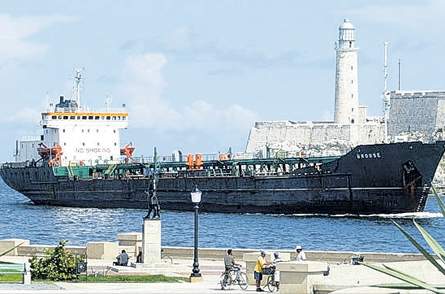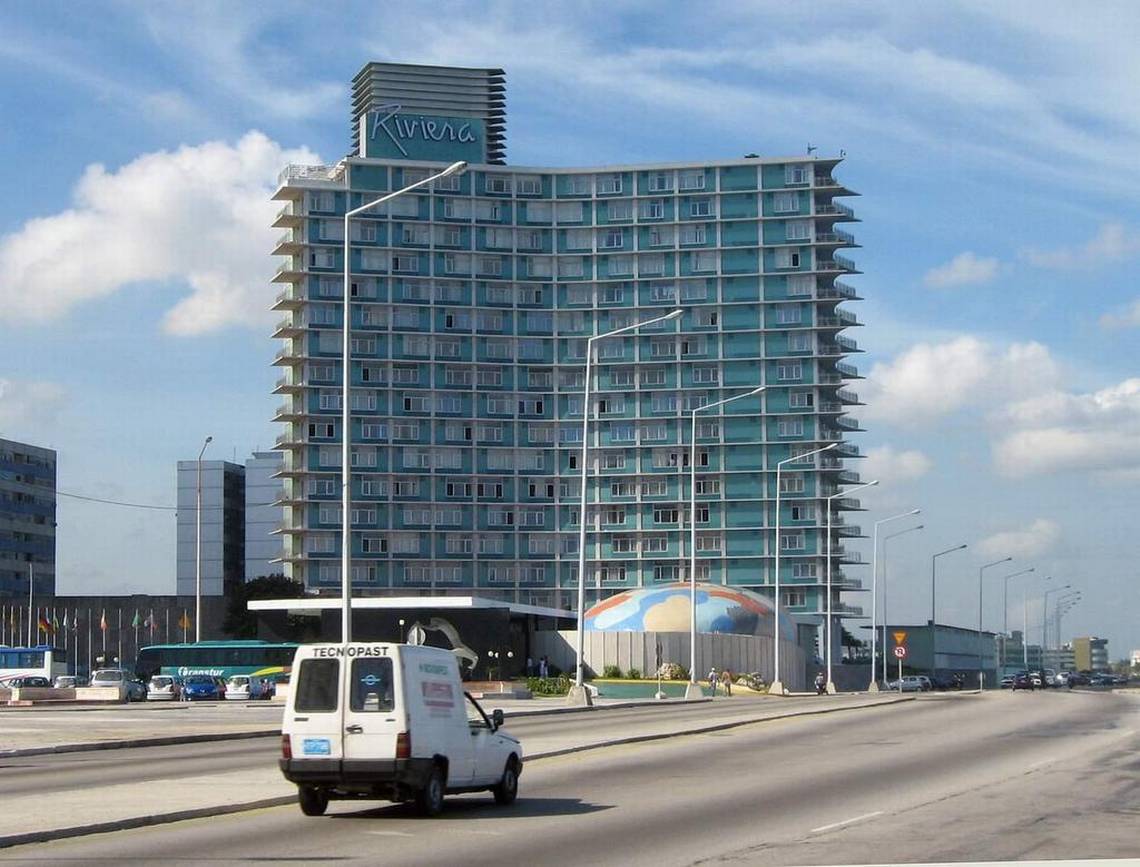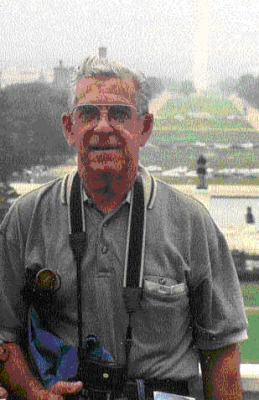The fourth and final installment in a four-part series written by Cuban American engineer Humberto (Bert) Corzo (see Part 1, Part 2, Part 3):
Reasons to keep the embargo on Cuba’s Castro dictatorship: Part IV of IV
Remittances
About two thirds of Cuban households receive remittances from abroad. The remittances of the Cuban exile community in 2016 has been estimated in $3.44 billion in cash and $3.0 billion in-kind according to The Havana Consulting Group and the U.S. Department of State.83 Total remittances are estimated at $6.44 billion, 2.78 times larger than the $2.32 billion generate by the export of goods.
Cash remittances have steadily increased from $1.0 billion in 2001 to $2.77 billion in 2013, a 277% increased. In 2016, the cost of cash remittances to Cuba was estimated at 11%, but the average for the rest of Latin America countries was only 6.5%, which provide the regime with an extra cash revenue. This high rate place Cuba among the most expensive “remittances markets” in the world.
The reason that Cuban exiles are one of the mayor contributors to the Castro regime income, which has help to keep it in power, is the money send to support their families in Cuba, mainly due to their vulnerability to the suffering of their relatives, weakness that is actively exploited by the regime.
Tourism
From 2000 to 2016, a total of 42 million of tourist from around the world visited Cuba and spent tens of billions of dollars there, but most of the benefits went mostly to the regime enterprises. From those 42 million tourist, 5.6 million, about 13% of the total, were from the U.S., 4.2 million Cuban Americans and 1.4 million other U.S. citizens.84 It is estimate that another 0.28 million, about 20% of the 1.4 million American legal visitors, visited the island illegally going through third countries without their passport been stamped by the regime authorities, bringing the total to 5.88 million. This figure makes Americans the second larger source of tourist, after Canadians, to visit the island. Those tourist haven’t been able to influence a political and economic opening of the Castro regime, making invalid the argument of the influence of the U.S. tourists to generate changes in Cuba.
Tourist travel to Cuba by U.S. citizens without government permission is prohibited by law. In theory it is still technically illegal for U.S. citizens to travel to Cuba. But since the travel restrictions to Cuba have been relax by the Obama administration, a large number from the U.S. are traveling to the island, making the U.S. the second larger source of tourism and tourist dollars to the regime after Canada.
The Obama administration removed the travel restriction imposed by the first Bush administration on Cuban Americans traveling to Cuba, and authorized licenses for travel to more than 250 Cuba travel agents and allowed more airports to provide charter service between the two countries. The administration allowed Cuban Americans to send goods and remittances to Cuba without restrictions and any U.S. person to send remittances to individuals in the island.
In 2016, according to ONEI, 427,747 Cubans living abroad and 284,552 U.S. citizens travelled to the island. In 2016, Cuba international tourist gross revenue reached $3.07 billion. Cornel Manuel Marrero is the Tourist Minister. The Ministry of the Revolutionary Armed Forces (MINFAR), through the tourist company Gaviota hold by the conglomerate Grupo GAESA, led by Raul Castro son in law, brigadier general Lopez-Callejas, runs the Cuba’s tourist industry. The military has total control of the tourist industry, a main source of income.

Tourists travel is controlled and channeled into the tourist resorts built in the island away from the major centers of population, and tourists are screened carefully to prevent “subversive propaganda” from entering the island. The regime security apparatus tightly controls most of the tourist resort areas such as Varadero, Cayo Coco, etc. They are off-limits to the average Cuban. Employees in these resorts are carefully screened by the regime and programmed to tell the visiting tourists the regime propaganda line. American tourists will have limited contact with common Cubans thus their influence would be very limited.
In November 2017, the Trump Administration eliminated individual people-to-people travel and added restrictions on financial transactions with companies controlled by the Cuban military.
Lifting the travel ban to Cuba by the U.S. Congress will amount to giving away future leverage for nothing in return. The lifting of the travel ban to Cuba should be used as bargaining tool in support of a future transitional regime.
Cuban dissidents and the Embargo
Fidel Castro on November 2002, speaking in the first session of Cuba’s National Assembly, dismissed any possibility of success to the opponents of the regime. He said: “There is no opposition to speak of because the dissidents are like fish in an empty fish tank; there is no oxygen left for the counterrevolution and there will be even less in the future”
Most Cuban dissidents support the embargo. Among the dissidents that fight for the advance of Human Rights and peaceful changes towards democracy and social justice, and support the embargo the following ones stand out:
Doctor Oscar Elías Biscet, president of the Lawton Foundation of Human Rights (FLDH), who served a prison sentence of three years for acts of protests in defense of human rights, was sentenced on April 10, 2003 to 25 years in prison for supposedly having violated law No. 88 with regard to Cuba’s protection of national independence and economy. According to Biscet “The embargo is one of the weapons in a nonviolent civic fight.”
Biscet, in an article published in Diario Las Américas, February 14, 2015, addressing the restart of diplomatic relations between the Obama administration and the Castro regime, said: “The derogation of the economic, financial and commercial embargo would prolong the life of the Castro dictatorship and a new form of exploitation of the Cuban people with the political reaffirmation of the Castrocomunismo.”
The economist Martha Beatriz Roque Cabello has a long history of working for human rights and Cuba’s freedom. She was one of the authors of the document “The Homeland Belongs to All.” Martha Beatriz, condemned to 20 years in prison for exercising her right to free speech and promoting the wellbeing of the Cuban people, was the only woman sanctioned among the 75 intellectuals and independent journalists sentenced in summary proceedings carried out on April 2003.
In her excellent and prophetic analysis of the Cuban economy published in Revista Hispano Cubana, No. 14, 200285, she wrote: “Before the demise of the URRS, in Cuba the embargo was not even talked about but now it has become a matter of live or death for the regime, since only the financial flux from the United States, opening the possibility of obtaining lines of credit, the American tourism and the increment of the remittances of relatives, will allow the regime to confront the desperate situation in which it has submerge the country.”
Martha Beatriz Roque Cabello, in the article “Cubans and Americans,” published January 13, 2015, in reference to the restoration of relations between the Castro regime and the U.S., said: “It must be clear to everybody that giving up everything and getting nothing in return will serve as a bad example to all those in the world refusing democratic principles.”
Cuban blogger Yoani Sanchez, in an interview with TV Marti March 20, 2013, in response to the question if she was on favor of lifting the embargo without conditions, responded: “I am not in favor of that, I think that it is clear that there should be conditions and that there should be a long process of debate before doing so.”
Berta Soler, leader of “The ladies in White,” in May 20, 2014, in a letter to Obama said: “The position of the Ladies in White is that it should be strengthened. No oxygen to the Cuban government, no diplomatic overtures, because this will not benefit the people of Cuba. When there was a socialist bloc and the Soviet Union, rather than evolving we regressed. What the Cuban government wants is to buy time to stay in power.”
At the Oslo Freedom Forum in May 26, 2015, Soler said: “We, Ladies in White, believe that these relations and conversations between the Cuban and U.S. governments will not be of any benefit to the Cuban people. And even less will it empower civil society, as President Barack Obama says. If no conditions are placed on the Cuban government, it will be more of the same or worse. We don’t see the U.S. government, the European Union, or Pope Francis, pronouncing themselves as regards the violations of human rights on the island, which is giving the Cuban government a green light to continue violating them.”

Subsidies
The main source of Cuba’s income has mostly been foreign subsidies. From 1961 to 1990, Cuba received an average of $4.0 billion per year in subsidies from the Soviet Union. During those years the resources dedicated to the construction of houses and the infrastructure were minimal. Public transportation had not improved nor the rationing card suppressed. The standard of living of the population declined. The social and racial inequality kept growing year after year. The United Nations Development Program (UNDP) ranked Cuba in 2001 in the penultimate place of poverty among the countries of Latin America. All those thousands of millions of dollars that arrived at the hands of the Castro regime did not benefit the Cuban people at all. Simply they were used to reinforce the power of Fidel Castro, to pay the cost of the wars in Africa, the subversion against the democratic governments of Latin America, and the creation of the repressive apparatus of the Department of the Interior.
From 2000 to 2014, Venezuela subsidies to Cuba amounted over $105 billion, an average of $7 billion per year, higher than the Soviet Union subsidies. According to the economist Carmelo Mesa Lago Venezuela subsidy to Cuba during 2008 totaled $9.4 billion.86
The ongoing economic crisis of Venezuela is rapidly affecting the subsidies to Cuba. The Barclays bank’ report estimates that from about 100,000 barrels of oil a day sent to Cuba in 2012, Venezuela has cut it to about 55,000 barrels a day in 2015. According to Eurasia Group estimates the island consume 40,000 barrels a day of the oils it receives from Venezuela and the rest is sold in the open market. The 50% reduction in oil prices and reduced amount for resale, drastically has reduced the revenues of the oil sale. A political change in Venezuela could terminate the oil subsidized to the Castro regime.

Foreign Debt
The Castro regime defaulted in its foreign debt to its westerns creditors in 1986. In 2013 the regime’s foreign debt amounted to $35 billion with the Paris Club, $35 billion with Russia, $25 billion with Venezuela, $10 billion with China and $10 billion with other countries, for a staggering foreign debt of $115 billion87, the world’s biggest debtor nation per capita. Part of this debt has been write off by Russia, Japan, Spain, Venezuela, Argentina, Mexico and other countries, and dumped on the back of their taxpayers.
There is basically one country that the Castro regime don’t have a debt with, except for the confiscation of American properties that is one of the main reasons for the establishment of the embargo, from which it could obtain credits, the United States.

U.S. farms and agribusinesses groups would have no problem of selling on credit to the Castro regime, since the U.S. Treasury Department guarantee their repayment in the event of a default. Under these guarantee programs when a U.S. financier extent credit to cover a sale abroad, the Commodity Credit Corporation (CCD), back by the Treasury Department, guarantee to make repayments if the foreign imported default. These programs allow U.S. exporters to get their money back, which is why they are willing to sell billions of dollars in merchandise on credit to the Castro regime.

What the Castro regime really wants are loans and lines of credit guaranteed by the U.S. Treasury Department, since it doesn’t have hard currency to pay the interests on the lines of credit for the importation of merchandise. The U.S. “bail-out” of Cuba through loans and lines of credit will not be pay back and the American taxpayers will be ones to pick up the debt.
The infusion of loans by the United States would replace the shrinking Venezuela subsidizes, thereby delaying the transition of the Cuban people towards democracy and guaranteeing additional decades of oppression and misery. The Castro tyrannical regime looks forward to the day when the military apparatus and the massive repressive security service will be maintained at the expense of the United States government.
Obama’s New Cuba Policy
In May 23, 2008, Senator Obama in a speech during the Presidential campaign said: “My policy towards Cuba will be guided by one word, liberty The road to freedom for all Cubans must begin with justice for Cuba’s political prisoners, the right of free speech, a free press, freedom of assembly, and it must lead to elections that are free and fair. That is my commitment.” He added, “I will maintain the embargo. It provides us with the leverage to present the regime with a clear choice: If you take significant steps toward democracy, beginning with the freeing of all political prisoners, we will take steps to begin normalizing relations.”88
The new policy of the Obama administration toward the Castro regime, in comparison with the previous administrations policies, has been a failure. The trade between the U.S. and the Castro regime, during the previous administration, grew steadily from $145.9 million in 2002 to $711.5 million in 2008. But under the Obama administration have fallen reaching only $245.5 million in 2016.89
The increase in remittances and revenues from tourism throw a lifeline to the regime, providing it with more money when its economy is facing a desperate financial situation with Venezuela in the brink of financial default.
The human rights situation in Cuba has worsened with the number of politically arrest increasing exponentially. The Cubans exodus continuous unabated. Since the normalization of diplomatic relations in December 2014, have been a sharply increased in Cubans rafters trying to escape. According to Coast Guard figures in fiscal year 2015, about 4,476 Cuban rafters were intercepted, and in the fiscal year 2016, another 5,523 were intercepted. During fiscal year 2015, close to 41,000 Cubans arrived in the U.S. without visas, the larger number arriving in the U.S in one year over the last 10 years.

Lifting the embargo
One of the main reasons of the enactment of the United States embargo was in response to the uncompensated confiscation of properties belonging to US citizens by the Castro regime after all attempts to negotiate the claims failed. The value of the properties was over 1.8 billion at the time of the confiscation according to the U.S. Foreign Claims Settlement Commission. Actual value of the claims including interest is close to $7 billion. Settlement of US citizens claims have to be reach before the embargo is lifted. By the way, the Castro regime has settled expropriation claims with the governments of France, Canada, Switzerland and Spain among others.
China and Vietnam, with whom United States has trade agreements, settled the claims that U.S. citizens had with regards to the expropriation of their properties, in order to reestablish trade relationship with the U.S. The Castro regime has no intention in settling those claims; on the contrary, the regime is demanding from the U.S. government, before the lifting of the embargo, the payment of billions of dollars in reparations for the alleged economic damage done by embargo. Incidentally, North Vietnam didn’t asked for any compensation for the losses suffered during the Vietnam War.
There are thousands of Cuban nationals expropriation claims that have never been addressed. According to Alonso and Lago these claims have an approximate value of $7 billion. Considering 6% annual simple interest the actual value of these claims would be around $27 billion. Article 24 of the 1940 Cuban Constitution required cash payment compensation to the owners of the expropriated property. After a democratic government is in power that support free-market principles, those whose claims are recognized should be compensated with restitution or monetary compensation, while the interest of third parties in Cuba should be also recognized and protected.

According to Castro’s own words, “There will not be change in Cuba with or without a blockade,” and in June 16, 2002, in a “no-alternative referendum,” petitioned a constitutional amendment declaring the regime socialist system “untouchable and eternal.” The rubber-stamp National Assembly passed the constitutional amendment making the one-party socialist state “irrevocable.” As we can see the lifting of the embargo will not be the solution to the drama that the Cuban people suffers.
If in the last 25 years the infusion of thousands of millions of dollars from the European Union, Latin America, Japan, Canada, etc. have not reached the hands of the Cuban people, nor the millions of tourists that have visited the island have been able to influence a political and economic opening of the Castro regime, who could maintain the illusion that tourism and trade with the United States can do it?
The effect of the embargo on Cuba has partially achieve its objectives. It prevented the Castro regime from obtaining loans and lines of credit that would allow it to finance its permanence in power and avoided the growth of the indebtedness of Cuba without any benefit for the population.
Cuban economy’s bankruptcy is the sole responsibility of the Castro regime. Under this system the economy will continuous to deteriorate without any hope of improvement. The economy is closely linked to the social development and standard of living of the Cuban people, which make very difficult the improvement of these under the existing regime.
Cuba’s problems are not the result of the embargo; they are due to the corruption and ineffectiveness of a system that is against private property and free enterprise. These and no others are the real reasons of the problems.
Lifting the embargo and the travel restrictions to Cuba without meaningful reforms will result in:
- Guarantee the continuation of the current totalitarian structures.
- Strengthen state enterprises, since money will flow into businesses owned by the Castro regime.
- Lead to a greater repression and control since the Castro regime leadership will fear that U.S. influence will subvert their power and put an end to their control.
- Delay instead of accelerate a transition to democracy on the island.
The necessary steps required to be taken by the Castro regime to lift the ban on trade and travel between the two countries shall be:
- Opposition parties should have the freedom to organize, assemble, and speak, with equal access to all airwaves. Political prisoners must be released and allowed to participate.
- Human rights organizations should be free to visit Cuba to ensure that the conditions for free elections are being created.
- Eliminate the “tourist apartheid,” where a number of hotels, resorts, beaches and restaurant are off-limits to the average Cuban, and the “medical apartheid” in those hospitals that are adequately equipped and do not lack anything, and which are reserved for the nomenclature, party elite and foreigners who pay in hard currency.
After all it was the United States and the European Union embargo, not investments, which helped end apartheid in South Africa.
Notes:
- Emilio Morales, Remittances to Cuba in 2016 grow by 2.7%, 20 July 2017, The Havana Consulting Group; U.S. Relations with Cuba, Bureau of Western Hemisphere Affairs Fact Sheet, November 8, 2017, U.S. Department of State.
- ONE, Tourism, 15.3 (2000-2014); Cuba in Transition Vol 23, ASCE 2013, Mercado Inmobiliario en Cuba, Emilio Morales and Joseph Scarpaci, Table 2; Cuba in Transition Vol 18, ASCE 2008, International Tourism in Cuba, Maria Dolores Espino, Tables 2, 3 and 4; Cuba: The Fastest Growing Remittance Market in Latin America, June 232, 2016. (http://www.thehavanaconsultinggroup.com/en-/Articles/Article/20)
- TRES TRISTES TRIMESTRES, Martha Beatriz Roque Cabello, Revista Hispano Cubana, No. 14, pp. 19-24, 2002.
- Venezuela’s Chávez Fills $9.4 Billion Yearly Post-Soviet Gap in Cuba’s Accounts, Herald Tribune.
- Cuba’s Debt Crisis: Foreign Debt, Unemployment, and Migration, ICCAS, Focus on Cuba, Issue 147, August 9, 2011; Paris Club: Cuba Remains 2nd Most Indebted Nation, Capitol Hill Cubans, June 25, 2014; The Paris Club Releases Comprehensive Data On Its Claims As Of 31 December 2013. (http://www.clubdeparis.org/en/communications/page/as-of-31-december-2013)
- Obama in 2008: No Normalized Relations with Cuba Until All Political Prisoners Released, Breitbart, December 17, 2014.
- Trade in Goods with Cuba, Foreign Trade, U.S. Department of Commerce.
 Humberto (Bert) Corzo was born in Cuba. In 1962 he graduated from University of Havana with a degree in Civil Engineering. Since coming to the United States in 1969, he established his residence in Los Angeles, California, where in 1972 he obtained the registration as a Professional Engineer. He has over forty five years of experience in the field of Structural Engineering. He is a Member of the American Society of Civil Engineers and the Cuban-American Association of Civil Engineers.
Humberto (Bert) Corzo was born in Cuba. In 1962 he graduated from University of Havana with a degree in Civil Engineering. Since coming to the United States in 1969, he established his residence in Los Angeles, California, where in 1972 he obtained the registration as a Professional Engineer. He has over forty five years of experience in the field of Structural Engineering. He is a Member of the American Society of Civil Engineers and the Cuban-American Association of Civil Engineers.
